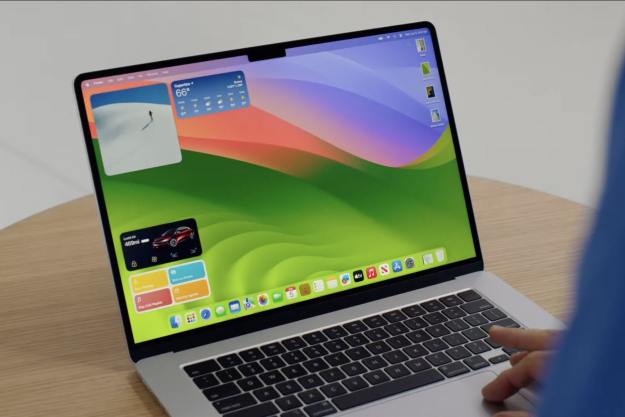Apple’s macOS Sonoma update has just been launched and, let’s be honest here, it’s a pretty modest upgrade (probably thanks to the work required on the Vision Pro’s software). Still, when Apple unveiled Sonoma a few months ago, there was one feature that got me excited: Continuity Camera.
This nifty tool lets you use your iPhone as a high-quality webcam. Sure, it actually debuted with macOS Ventura, but this year we’ve got much more control over how it works. Sliders! Toggles! Yes, it’s all here.
I’ve been playing around with the spruced-up Continuity Camera to see if my excitement was justified. While it’s not perfect, the latest changes mean that, for many people, it’s a better option than even the best webcams. Here’s why.
Unfulfilled promise

In macOS Ventura, Continuity Camera showed a ton of promise. It would let you make use of those high-resolution, turbo-charged cameras on your iPhone, save you the money you’d otherwise spend on a webcam, and get a strong dose of Apple’s patented combination of techno-wizardry and ease of use. What’s not to love?
Well, although it was great quality and wonderfully simple to use, its limitations quickly became apparent. Most effects, from the background-blurring Portrait mode to the auto-framing Center Stage, were simple on/off switches. There was little-to-no customization available, so if Portrait mode didn’t blur out your shamefully messy bedroom quite to your liking, well, that was too bad.
Ultimately, it wasn’t a huge problem — we still had a really neat tool that meant anyone who did not already own a webcam didn’t need to fork out any cash to buy one. But I couldn’t help feeling it was a bit of a missed opportunity on Apple’s part. The company had left the improvements for another day when they should have been present from the start. But better late than never, right?
Welcome additions

If like me, you were left wanting more from macOS Ventura’s Continuity Camera, you’ll likely find that the macOS Sonoma update fixes a bunch of your gripes. In many ways, it feels like the product Apple should have released last year.
Most features, including Portrait Mode, Center Stage, and Studio Light, can now be adjusted. Both Portrait Mode and Studio Light now have sliders that let you tweak the strength of their respective effects, while Center Stage allows you to choose between the Main and Ultra Wide cameras on your iPhone (provided your phone has both).
To be clear, this hasn’t fixed everything. Portrait mode’s blur is still disappointingly anemic, and I’d love much more control over the field of view than the measly two options Center Stage offers. You still get more settings in the rival Camo app, which I definitely recommend trying out. For a little menu bar app, Continuity Camera is greatly improved, but it could be so much more.
Still, let’s be fair. Apple has fixed up a bunch of Continuity Camera’s key weaknesses, and it’s absolutely one of the best features in macOS Sonoma. The fact that something like this is a highlight really emphasizes how small this macOS update is. But given how much video calls dominate our lives these days, Continuity Camera’s improvements are a welcome addition.
Editors' Recommendations
- These are the 10 settings I always change on a new Mac
- 7 key settings in macOS Sonoma you should change right now
- All the best macOS Sonoma tips and tricks you need to know
- Everything announced at Apple’s ‘Scary Fast’ event: iMac, M3, and more
- I love Macs. But here are 5 reasons I keep coming back to Windows




